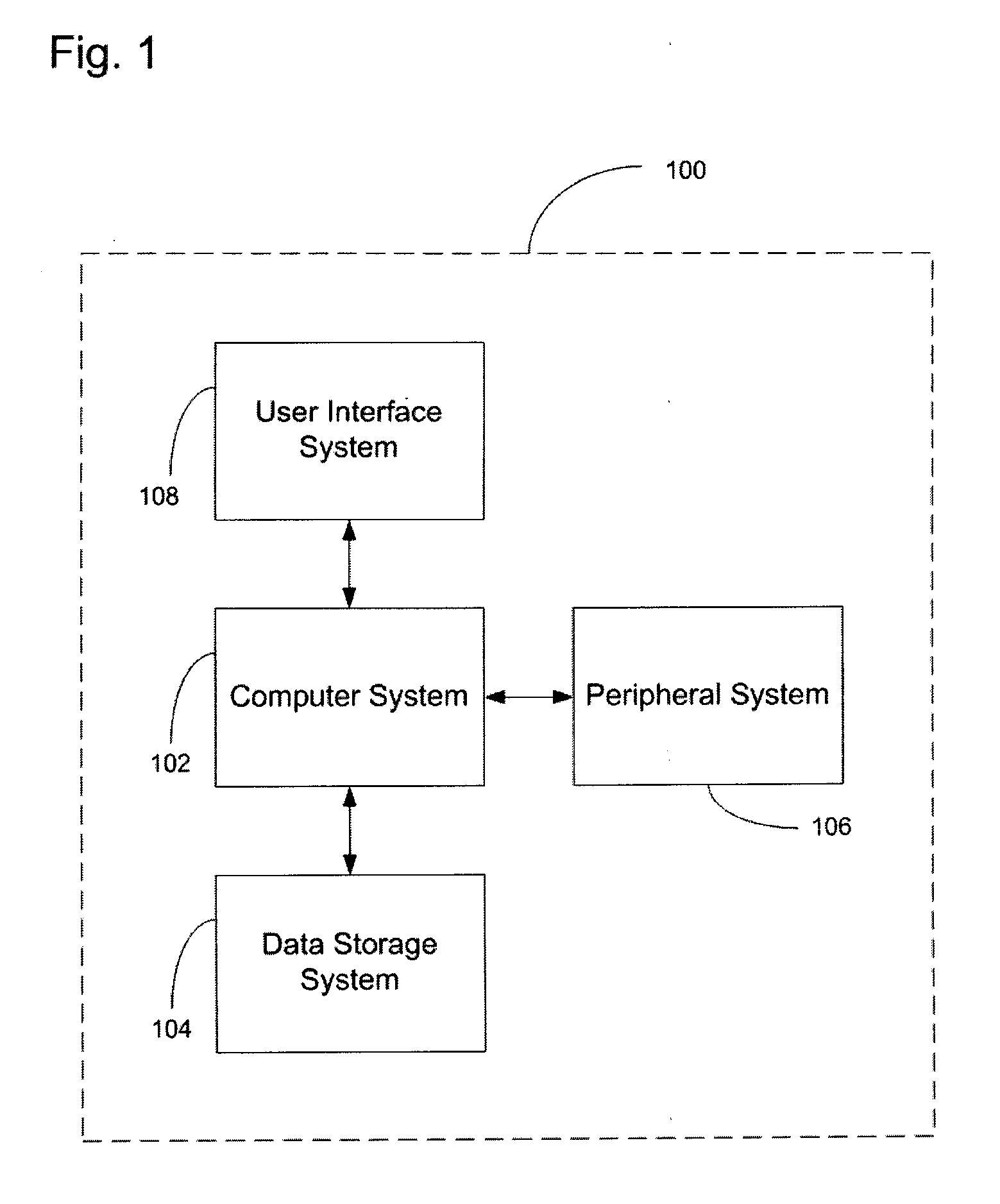Method for digital image class detection
a digital image and class technology, applied in image analysis, instruments, computing, etc., can solve the problems of not being able to adjust the color balance of any image, and the utility of this method is understood to be limited to the detection of traditional sepia-toned rgb digital images
- Summary
- Abstract
- Description
- Claims
- Application Information
AI Technical Summary
Problems solved by technology
Method used
Image
Examples
Embodiment Construction
[0034]Various embodiments of the present invention pertain to classifying still digital images with little or no user intervention. It should be noted that, unless otherwise explicitly noted or required by context, the word “or” is used in this disclosure in a non-exclusive sense.
[0035]FIG. 1 illustrates a system for facilitating still digital image classification, according to an embodiment of the present invention. The system 100 includes a computer system 102, a peripheral system 106, a user interface system 108, and a data storage system 104. The data storage system 104, the peripheral system 106, and the user interface system 108 are communicatively connected to the computer system 102. The computer system includes one or more computers communicatively connected that implement the processes of the various embodiments of the present invention, including the example processes of FIGS. 2-7 described herein.
[0036]The term “computer” is intended to be a synonym for or include any da...
PUM
 Login to View More
Login to View More Abstract
Description
Claims
Application Information
 Login to View More
Login to View More - R&D
- Intellectual Property
- Life Sciences
- Materials
- Tech Scout
- Unparalleled Data Quality
- Higher Quality Content
- 60% Fewer Hallucinations
Browse by: Latest US Patents, China's latest patents, Technical Efficacy Thesaurus, Application Domain, Technology Topic, Popular Technical Reports.
© 2025 PatSnap. All rights reserved.Legal|Privacy policy|Modern Slavery Act Transparency Statement|Sitemap|About US| Contact US: help@patsnap.com



